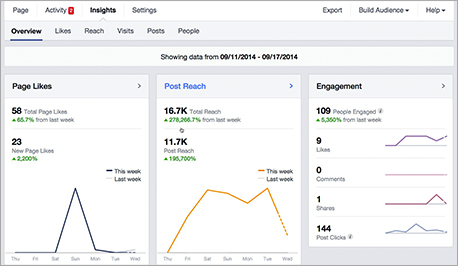Audience Development Essentials for Journalists
Read this article in
![]() The first and most important task of audience development for any media organization is to produce good journalism. It’s obvious but it’s not simple — and it starts with the definition of good content.
The first and most important task of audience development for any media organization is to produce good journalism. It’s obvious but it’s not simple — and it starts with the definition of good content.
But since journalism professionals have reached some consensus on the subject, I’ll address the next step: to ensure that the content produced will be consumed by the public in the digital environment.
There is a famous phrase from the business world that says you cannot manage what you do not measure. It is the same with the audience. You need to have accurate data to know where you are and what you need to do to grow.
Likes in your social network, praises from friends or numbers of clicks are not enough. You need to use specialized tools that count variables reliably and accurately, and that can cross data points to clarify reasons for the success or failure of a story.
The following guidelines have been designed for media outlets but also apply to individual journalists. Each journalist has to think of himself or herself as a brand, and take strides in developing their brand in the same way publications do.
Know Your Audience
The first step is to get to know your audience and set goals. Certain sites may want to speak to a specific audience — young women or airplane pilots over 50, for example. Outlets of general interest may want to reach as many people as possible. In both cases, data are critical.
Treat the audience data as if you were reporting on the government. Your information needs to be reliable so you have an accurate diagnosis for any period of time. Without this, monitoring your progress will be very difficult.
Reliable data is also important so that your credibility is not at risk with the public or business partners (advertisers, donors, etc.) if your results are publicly disclosed.
Larger outlets should invest in creating and training a specialized team even in situations where financing is difficult; it is important to have at least one dedicated full-time professional on the subject.
Smaller outlets should also have a professional specializing in audiences, even if it is not that person’s only job. In both cases, the professional should help the rest of the newsroom by disseminating best practices.
How To Know Your Audience
There are a variety of audience measurement software and solutions, but among the best-known business tools are Adobe Analytics, Chartbeat and Google Analytics 360. They all work from codes that, with each view of a site, collect information that is processed and transformed into metrics.
Adobe and Google programs are more robust and complex, with a number of resources more geared toward e-commerce sites and advertising metrics. Chartbeat was created for the editorial market, so it has more specific metrics.
ComScore is another company that measures digital audiences but uses a slightly different methodology which is based on surveys with user samples.
The alternative to paid programs is free Google Analytics which, while being a basic version, has a lot of very valuable features for audience measurement.
In addition to the ready-made programs, it is also possible to create systems incorporated by the Content Management Systems themselves, but this can end up becoming more expensive and the result will hardly be better than what is offered by specialized companies.
With any of the tools, you’ll already have the basics to get you started. View the work with journalistic scrutiny. Ask simple questions and “interview” the data. Where do my hits come from? Which times are most important? What are the origins of traffic?
Continuing to work on crafting questions and seeking answers in the data will generate insights that will help you take action, such as choosing the best time to post.
In addition to the most basic information, some tools also offer demographic data such as gender or age range. This data let’s the niche outlet know if it is reaching its target audience and larger outlets know who it isn’t reaching and on which groups it should focus more efforts.
If the tools do not provide enough data for this job, it is possible to draw a qualitative visitor profile with other available information, such as comments from articles. An alternative is to create surveys with the most important questions and invite readers to participate. For this, you can use free resources like SurveyMonkey, Google Forms or Typeform, among others.
No matter what solution you choose, what’s important is to adopt a new mantra: data, data, data. In any digital initiative, there must be concern about measuring performance so that you can repeat what works and correct errors.
Concentrate Efforts
From the data, you’ll know which distribution channels are most important to your content today and which ones to work on. There are outlets in which direct traffic is the majority, while in others social networks or newsletters have greater weight.
When identifying the major channels, focus your efforts on maintaining audience ratings where you are already doing well. At the same time, try to understand how you can grow in other ways.
Try to identify which channel has the greatest potential for your content and which still represents a small slice of your traffic. Take specific actions, supported by specific tools, to understand and develop your audience on that channel.
Below are tips on two of the top channels for developing audience for news media.
Social Networks
The platforms themselves have free features (such as Facebook Insights and Twitter Analytics) that allow you to analyze data and identify patterns that can help you grow, such as the most successful subjects or the optimal post range.
But these tools are limited. Other commercial tools will, in addition to data analysis, allow you to analyze the performance of other outlets and help monitor several networks at the same time. This is the case with NewsWhip, Wayin, Hootsuite, Simply Measured and Sprinklr, among others. One of the best social networking tools in the world, CrowdTangle, has become free for content producers after being bought by Facebook.
Tip: Use link shortcuts with built-in analytics such as bit.ly to monitor the performance and dissemination of your content across social networks. In the absence of familiarity or time to learn other tools, they also help measure and understand specific actions such as the audience of newsletters, for example. Here’s a good tutorial on the combined use of bit.ly with Google Analytics.
Search Engines
The most important thing for search engines is the structure of your site from a technological point of view as well as the organization of the content. Since Google is the largest, focus on it. Here you can find a video with general guidelines and here is a more detailed guide, in book form.
Another tip to perform better in search results is to watch out for features like Google Trends, which showcases the hottest real-time issues and lets you search to gauge public interest in a particular topic. The tool is useful when choosing between two options for a headline: look for the keywords of each one of them and check interest levels.
Retain Your Audience
Your distribution strategy worked and you managed to win over the visitor. Great, but the work is not over yet. You need to get him or her to see your content through to the end and awaken interest in accessing other material you produce.
The design and usability of your site needs to be optimized so that it loads easily and quickly on any device (desktop, mobile, tablet, etc.). You also need to have several other entries in order for the reader to stay on your site, such as related links.
Most journalism is consumed outside an organized channel like a homepage, so you have to look at each piece of your content as independent, with all the resources available to the visitor.
Think of it like this: if the visitor comes in and likes the place, it is much more likely that he or she will return the next day. In the future, convincing a visitor to click on your content will be much easier.
Why is it important to maintain loyalty? At a recent conference, Rob Barrett, President of Digital at Hearst Group, said that 10 percent of loyal visitors account for 60 percent of the page views.
“Loyal users — those who visit a site 10 times or more a month — drive 15 times more impressions than casual users,” Barrett said.
Knowing If It’s Going Well
In audience development, the practical steps defined by your strategy must be done while you keep an eye on the metrics. But in addition to real-time monitoring, it is necessary to monitor its evolution over time by considering longer periods.
It is important, therefore, to stop from time to time to take a deeper dive into your data to understand what is working and what is not — and why — so you can take new actions.
It is also interesting to follow competing or similar outlets, so that you have a palpable target to pursue (everyone loves a challenge) and an external reference point.
You will hardly have the same detailed data from other outlets, but use public information from companies such as ComScore (which, in addition to data provided to customers, usually publishes rankings with general data) or traffic-estimating services such as SimilarWeb, Alexa or Semrush (all with free data and more detailed paid versions).
Revenue
Developing the audience is important whatever type of outlet we are talking about. For non-profits, it is important to gain visibility and relevance, which helps in the task of attracting sponsorships and partnerships .
Traditional media is still directly linked to the generation of advertising revenue and digital ads, in most cases, are marketed based on views or “impressions.”
Even considering the general downward trend in advertising as a source of revenue, audience growth is important — such as the paid subscription model with a porous paywall, the most frequent commercial strategy for large outlets.
In these cases, the content serves as bait for new subscribers and distribution strategies make it easier to reach subscribers which reinforces the reasons that led him to pay for the content.
Other Recommendations
Learn from failure: Since it’s difficult to know what will be successful, focus on what was a failure. Make a list of what was least consumed and see if it’s worth it to spend effort on something that is not being appreciated. If there is no journalistic justification for publication, leave it. If there is, find another way to make that topic more interesting.
Save the data: When working with audience programs, be sure to download the most important data periodically and store it in another location, such as a spreadsheet. It’s important to keep historical data at hand and also serves as backup if the system becomes inoperative, if there is a program interruption or any other problem.
Follow the experts: A good way to stay current in the field of audience and digital metrics is to follow the publications of companies that work with it. Be on their social networks, subscribe to newsletters or check their blogs from time to time. As a form of disclosure, many companies periodically study their markets, spreading valuable insights that can help.
Mobile first: Everything these days needs to work perfectly on mobile. So even if you work on a computer, test everything on your phone to view how your audience will see it. A beautiful design doesn’t matter if a large and growing part of the public cannot see it. Even if your traffic is still mostly desktop, it is very likely that in the near future this will change. Additionally, everything from mobile can be seen on the desktop, but the opposite is not true.
Think about impact: The focus here was on metrics for consumption, engagement, and so on. But, especially in non-profit media, the discussion about the impact of journalism is increasingly stronger. Often the relevance of a story cannot and should not be measured by number of views but by changes it has made in real life, whether in a community or a whole country. Organizations like ProPublica and The Marshall Project have developed a robust methodology for measuring impact, and entities such as the Media Impact Project also study the subject.
This post first appeared on the Journalism in the Americas website and is reproduced with permission. This article is part of the book Innovative Journalism in Latin America, published by the Knight Center for Journalism in the Americas, with the help of Open Society Foundations’ Program on Independent Journalism. (Note: OSF is a long-time donor to GIJN.)
 Brazilian Andre Monteiro is involved in most data-driven projects at the daily Folha de S.Paulo. He joined the University of Texas at Austin for the spring of 2015 as a journalist in residence at the School of Journalism with a focus in data journalism. He has a BA in journalism.
Brazilian Andre Monteiro is involved in most data-driven projects at the daily Folha de S.Paulo. He joined the University of Texas at Austin for the spring of 2015 as a journalist in residence at the School of Journalism with a focus in data journalism. He has a BA in journalism.













